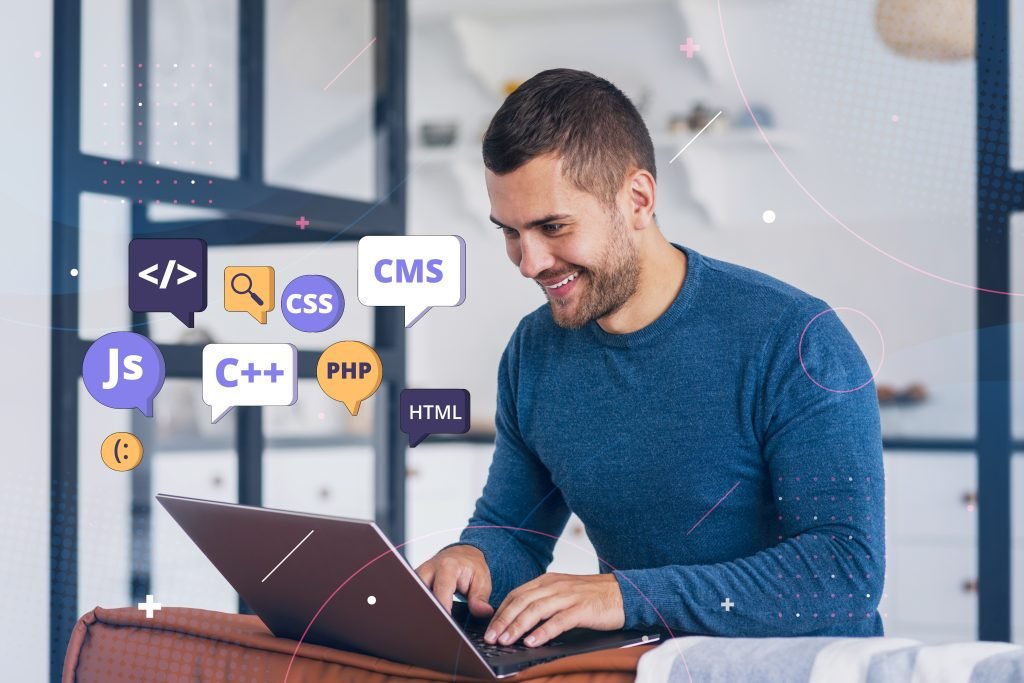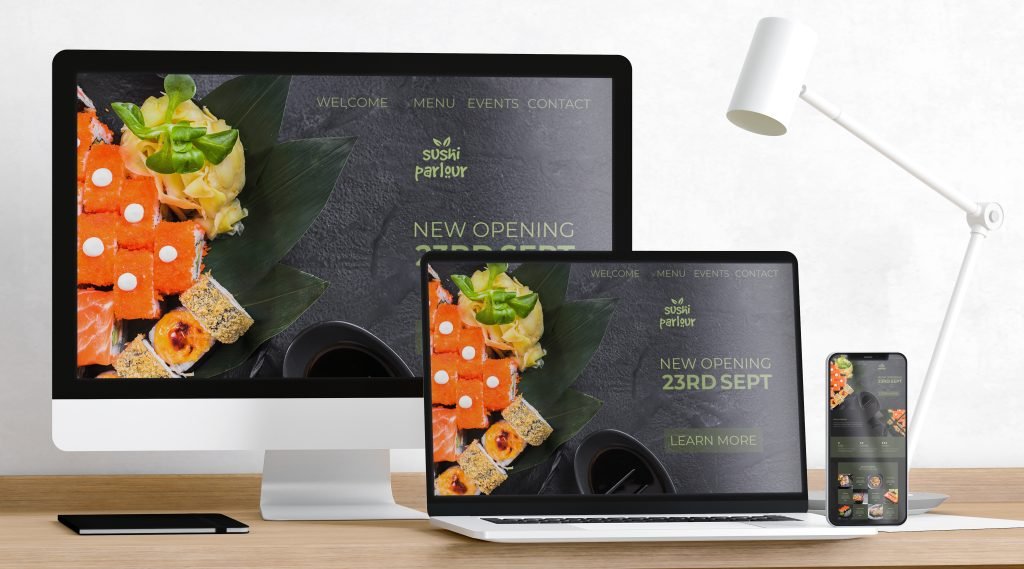Imagine this: you stumble upon a website that looks like it hasn’t been updated since the early 2000s. As developers and programmers, we know how important it is to stay up to date with the latest trends and technologies. That’s why we created this book, WP for Developers, to help you enhance your skills and create modern, visually appealing websites. The layout of the book’s edition is clunky, the images in the wp are pixelated, and navigating through the pages of the system feels like a maze. Frustrating, right? Now picture another scenario: you visit a sleek, modern website that instantly grabs the attention of developers around the world with its stunning visuals and seamless navigation. This website serves as a prime example for developers looking to create a book that captivates readers. Which one would you trust more?
In today’s digital landscape, having a well-designed and developed website is crucial for businesses to thrive online. Additionally, having an engaging book on the website can further enhance the user experience and attract more readers. With over 35% of websites worldwide powered by WordPress, professional design and development are essential for creating an impactful online presence. Whether you’re running a blog, e-commerce site, or any other type of book website, investing in professional design and development is crucial. A professionally designed WordPress site not only enhances user experience but also boosts credibility and drives conversions.
Responsiveness is key. Your website should adapt seamlessly to different devices and screen sizes, ensuring that users have an optimal experience regardless of how they access your site.
So if you’re looking to showcase your products or services effectively online and make a lasting impression on your audience, professional WordPress design and development are essential. Get ready to take your online presence to the next level!
Key Principles for Successful WordPress Design and Development
User-Centered Approach
Creating a professional WordPress site requires following a user-centered approach. By understanding the needs and preferences of your target audience, you can design an intuitive navigation system that ensures seamless user experiences. Consider organizing your content in a logical and easily accessible manner, making it effortless for visitors to find what they’re looking for.
Clean Coding Practices
Implementing clean coding practices is crucial for the success of your WordPress site. Clean code ensures efficient performance, faster loading times, and better search engine rankings. When the code is well-structured and free from unnecessary elements or redundancies, it becomes easier to maintain and update your website. Clean coding reduces the risk of compatibility issues with different browsers or devices.
Accessibility Guidelines
Adhering to accessibility guidelines is essential to ensure that everyone, including people with disabilities, can access the content on your WordPress site easily. Consider incorporating features such as alternative text for images, proper heading structures for screen readers, and keyboard navigation options. By making your website accessible to all users, you create a more inclusive online experience.
Security Measures
Integrating robust security measures into your WordPress site is vital to protect it from potential threats. Start by obtaining an SSL certificate to encrypt data transmission between users’ browsers and your website server. Regularly updating both WordPress core files and plugins helps patch any vulnerabilities that hackers may exploit. Using strong passwords and implementing two-factor authentication adds an extra layer of security.
When designing and developing a professional WordPress site, keep these key principles in mind: prioritize user experience through intuitive navigation; optimize performance with clean coding practices; ensure accessibility for all users; and safeguard the integrity of your website through stringent security measures.
By following these principles, you can create a visually appealing website that not only attracts visitors but also provides them with a seamless browsing experience. Remember that each decision you make during the design and development process should align with these principles to maximize the effectiveness of your WordPress site.
Latest Trends in WordPress Design and Development
The world of WordPress design and development is constantly evolving, with new trends emerging to keep websites fresh and engaging.
Rise of Minimalist Design
Minimalism is all about simplicity, and it has become a dominant trend in WordPress design. Many businesses are opting for clean and uncluttered websites that prioritize clear typography, ample white space, and fewer distractions. By stripping away unnecessary elements, minimalist design focuses on delivering a seamless user experience that is both visually appealing and easy to navigate.
Customizable Themes
Gone are the days when businesses had to settle for generic website templates. With customizable themes, WordPress users now have the ability to personalize their websites according to their brand identity. Drag-and-drop builders or theme customizers make it easier than ever to modify layouts, colors, fonts, and more. This level of customization allows businesses to create unique online experiences that align with their overall branding strategy.
Integration of Chatbots
Chatbots have become increasingly popular in recent years due to their ability to provide instant customer support while enhancing engagement with website visitors. By integrating chatbots into WordPress sites, businesses can offer round-the-clock assistance without human intervention. These AI-powered bots can answer frequently asked questions, guide users through processes, and even collect valuable customer information.
Parallax Scrolling Effects
Parallax scrolling effects add depth and interactivity to WordPress websites by creating a layered visual experience as users scroll down the page. This technique involves moving different elements at different speeds as the user navigates through the content. The result is an engaging storytelling approach that captivates visitors and encourages them to explore further.
These trends demonstrate how WordPress continues to evolve as a versatile platform for designing and developing professional websites. From minimalist design principles that prioritize simplicity and clarity to customizable themes that allow businesses to create unique online experiences, WordPress offers a range of options for businesses to showcase their brand identity and engage with their audience.
Best Practices for Creating Visually Appealing WordPress Websites

To create visually appealing WordPress websites, it’s crucial to consider various design elements that will enhance the overall aesthetic and user experience. Here are some best practices to keep in mind:
Choosing a Visually Appealing Color Palette
Selecting the right color palette is essential as it sets the tone and mood of your website. It’s important to choose colors that align with your brand’s personality and resonate with your target audience. Consider using complementary colors or shades from the same color family to create visual harmony.
Use tools like Adobe Color or Coolors to generate color schemes that work well together.
Remember to balance vibrant and neutral tones for a visually engaging website.
Avoid using too many contrasting colors, as this can create visual chaos.
Utilizing High-Quality Images
Images play a significant role in capturing users’ attention and conveying messages effectively. When adding images to your WordPress website, ensure they are high-quality and optimized for web use. This will improve loading times without compromising on visual impact.
Optimize images by compressing them using tools like TinyPNG or Squoosh.
Use professional stock photos or hire a photographer for unique visuals.
Consider incorporating relevant infographics or illustrations to enhance content engagement.
Consistent Branding Elements
Maintaining consistent branding elements across all pages of your WordPress website is key in creating a cohesive look and feel. Consistency helps users recognize and associate your brand with specific visuals, fostering trust and familiarity.
Ensure your logo is prominently displayed on each page.
Use consistent fonts throughout the website for a unified design.
Incorporate branded graphics or icons that represent your business identity.
Implementing Effective Typography Techniques
Typography plays a vital role in enhancing readability on WordPress sites. By employing effective typography techniques, you can improve user experience and make content more accessible.
Choose font pairings that complement each other and create visual interest.
Opt for legible font sizes to ensure easy reading on different devices.
Use appropriate line spacing and paragraph breaks to enhance readability.
Remember, a visually appealing website not only captures attention but also keeps users engaged. By implementing these best practices, you can create a WordPress website that stands out and leaves a lasting impression on your visitors.
Practical Tips for Professional WordPress Design and Development
Regularly Updating WordPress Core, Themes, and Plugins
To ensure optimal performance, security, and compatibility of your WordPress website, it is crucial to regularly update the WordPress core, themes, and plugins. Updates often include bug fixes, feature enhancements, and security patches that help keep your site running smoothly. By staying up-to-date with these updates, you can avoid potential vulnerabilities and ensure that your website functions seamlessly.
Optimizing Images for Faster Loading Times
Images play a significant role in enhancing the visual appeal of your WordPress website. However, large image file sizes can slow down page loading times. To address this issue, it’s essential to optimize images through compression techniques. Image compression reduces file sizes without compromising visual quality. This optimization allows your website to load quickly and ensures a smooth user experience.
Utilizing Caching Plugins for Improved Website Speed
Website speed is a critical factor that affects user experience and search engine rankings. One effective way to enhance website speed on WordPress is by utilizing caching plugins. These plugins create static versions of pages and store them on the server. When visitors access your site again, the cached version is served instead of generating the page from scratch. This significantly reduces loading times and improves overall performance.
Implementing Responsive Design for Cross-Device Compatibility
With an increasing number of people accessing websites on various devices such as smartphones and tablets, it’s crucial to implement responsive design in your WordPress development process. Responsive design ensures that your website displays correctly across different screen sizes and devices. By adapting to different resolutions automatically, responsive websites provide an optimal viewing experience regardless of the device being used.
Optimizing User Experience in WordPress Design and Development
In order to create professional WordPress websites that leave a lasting impression on users, it is crucial to optimize the user experience. By focusing on key aspects such as user research, clear calls-to-action (CTAs), intuitive navigation structures, and interactive elements, you can ensure that visitors have a seamless and engaging experience on your WordPress site.
Conducting User Research and Usability Testing
To truly understand the needs and preferences of your target audience, it is important to conduct thorough user research. This involves gathering insights about their demographics, behaviors, and goals. By understanding your users’ pain points, you can tailor your WordPress design and development approach accordingly.
Usability testing is another valuable tool for optimizing the user experience. By observing how users interact with your website prototype or existing site, you can identify areas of improvement. This feedback-driven approach allows you to make informed decisions about layout, content placement, and overall functionality.
Creating Clear Calls-to-Action (CTAs) with Compelling Copy
A well-designed website should guide users towards taking desired actions. Clear calls-to-action (CTAs) play a vital role in this process. These are buttons or links that prompt visitors to perform specific actions such as signing up for a newsletter, making a purchase, or contacting you for more information.
When creating CTAs for your WordPress site, it’s essential to use compelling copy that motivates users to take action. Use persuasive language that clearly communicates the benefits they will receive by clicking on the CTA button. For example: “Unlock Exclusive Discounts Now” or “Get Your Free Ebook Today!”
Implementing Intuitive Navigation Structures
Navigating through a website should be effortless for users. Implementing an intuitive navigation structure with logical menu hierarchies is key to achieving this goal on your WordPress site. Users should be able to find information easily without feeling lost or overwhelmed.
Consider organizing your menu items in a logical and hierarchical manner. Use descriptive labels that clearly communicate what each section contains. Incorporating search functionality can further enhance the user experience by allowing users to quickly find specific content.
Incorporating Interactive Elements for Enhanced Engagement
Interactive elements such as sliders, accordions, or carousels can greatly enhance user engagement and interaction on your WordPress website. These features allow users to interact with content in a dynamic and visually appealing way.
For example, you could use a slider to showcase different products or services on your homepage. This enables users to view multiple offerings without having to navigate through separate pages. Similarly, an accordion feature can be used to display frequently asked questions (FAQs), providing a seamless experience for users seeking answers.
By incorporating these interactive elements strategically, you can create an engaging and immersive user experience that keeps visitors coming back for more.
Ensuring Mobile Responsiveness in WordPress Design and Development
In today’s digital age, where mobile devices have become an integral part of our lives, it is crucial to ensure that websites are optimized for mobile responsiveness. This holds true for WordPress design and development as well. By adopting a mobile-first approach, you can create a seamless user experience across all devices.
Adopting a Mobile-First Approach
When designing and developing a WordPress site, it’s essential to prioritize mobile devices over desktops or tablets. A mobile-first approach means focusing on creating a layout that is tailored specifically for smaller screens. By starting with the mobile version, you can ensure that your website looks great and functions smoothly on smartphones.
Using Responsive Design Frameworks
To simplify the process of building mobile-friendly layouts for WordPress websites, you can leverage responsive design frameworks like Bootstrap or Foundation. These frameworks provide pre-built components and stylesheets that automatically adjust based on the screen size. They enable you to create responsive designs without having to write extensive custom CSS code.
Testing Website Responsiveness
It’s crucial to test the responsiveness of your WordPress website across different devices before launching it. Tools like Google’s Mobile-Friendly Test can help you determine if your site meets the necessary criteria for optimal performance on mobile devices. By conducting thorough testing, you can identify any issues or inconsistencies and address them promptly.
Optimizing Page Load Speed
Page load speed plays a significant role in ensuring a smooth user experience on mobile devices. Slow-loading websites not only frustrate users but also negatively impact search engine rankings. To enhance mobile responsiveness, it’s important to optimize page load speed by minimizing CSS and JavaScript files. Compressing images and utilizing caching mechanisms are also effective strategies for improving performance.
Providing Engaging Content
While optimizing your WordPress site for mobile responsiveness is crucial, don’t forget about the importance of engaging content. Ensure that your website provides valuable information in a format that is easy to consume on mobile devices. Use concise sentences, bullet points, and headings to break up the text and make it more scannable. Incorporate multimedia elements like images and videos to enhance the user experience.
Integrating SEO Strategies into Professional WordPress Design and Development.
Congratulations! You’ve learned about the key principles, latest trends, best practices, practical tips, user experience optimization, and mobile responsiveness in professional WordPress design and development. Now it’s time to take your skills to the next level by integrating SEO strategies into your projects. Search Engine Optimization (SEO) plays a crucial role in driving organic traffic to your website and improving its visibility on search engine result pages. By implementing effective SEO techniques, you can ensure that your beautifully designed WordPress websites not only look great but also rank high in search engine rankings.
To get started with SEO for WordPress, make sure you optimize your website’s meta tags, headings, URLs, and content for relevant keywords. Focus on creating high-quality backlinks from reputable sources to increase your site’s authority. Don’t forget to leverage social media platforms to promote your content and engage with your audience. Remember that SEO is an ongoing process, so regularly monitor and analyze your website’s performance using tools like Google Analytics. By incorporating these strategies into your professional WordPress design and development projects, you’ll be well-equipped to create websites that are both visually appealing and optimized for search engines.
FAQs
How important is SEO for my WordPress website?
SEO is incredibly important for any website as it helps improve its visibility on search engine result pages (SERPs). With proper optimization techniques implemented on your WordPress site, you can attract organic traffic from search engines and increase the chances of reaching a wider audience.
Can I do SEO myself or should I hire a professional?
You can certainly handle basic SEO tasks yourself by following best practices and utilizing various online resources available. However, if you want more advanced optimization or lack the time or expertise required for effective SEO implementation, hiring a professional may be beneficial.
What are some common mistakes to avoid in WordPress SEO?
Some common mistakes to avoid in WordPress SEO include keyword stuffing, using duplicate content, neglecting mobile optimization, ignoring meta tags and descriptions, and neglecting to create high-quality backlinks.
How long does it take to see results from SEO efforts?
The time it takes to see results from your SEO efforts can vary depending on various factors such as competition, website age, content quality, and the effectiveness of your optimization techniques. It’s important to remember that SEO is a long-term strategy that requires patience and consistent effort.
Are there any SEO plugins available for WordPress?
Yes, there are several popular SEO plugins available for WordPress such as Yoast SEO, All in One SEO Pack, and Rank Math. These plugins provide valuable features and tools to help you optimize your website for search engines effectively.






